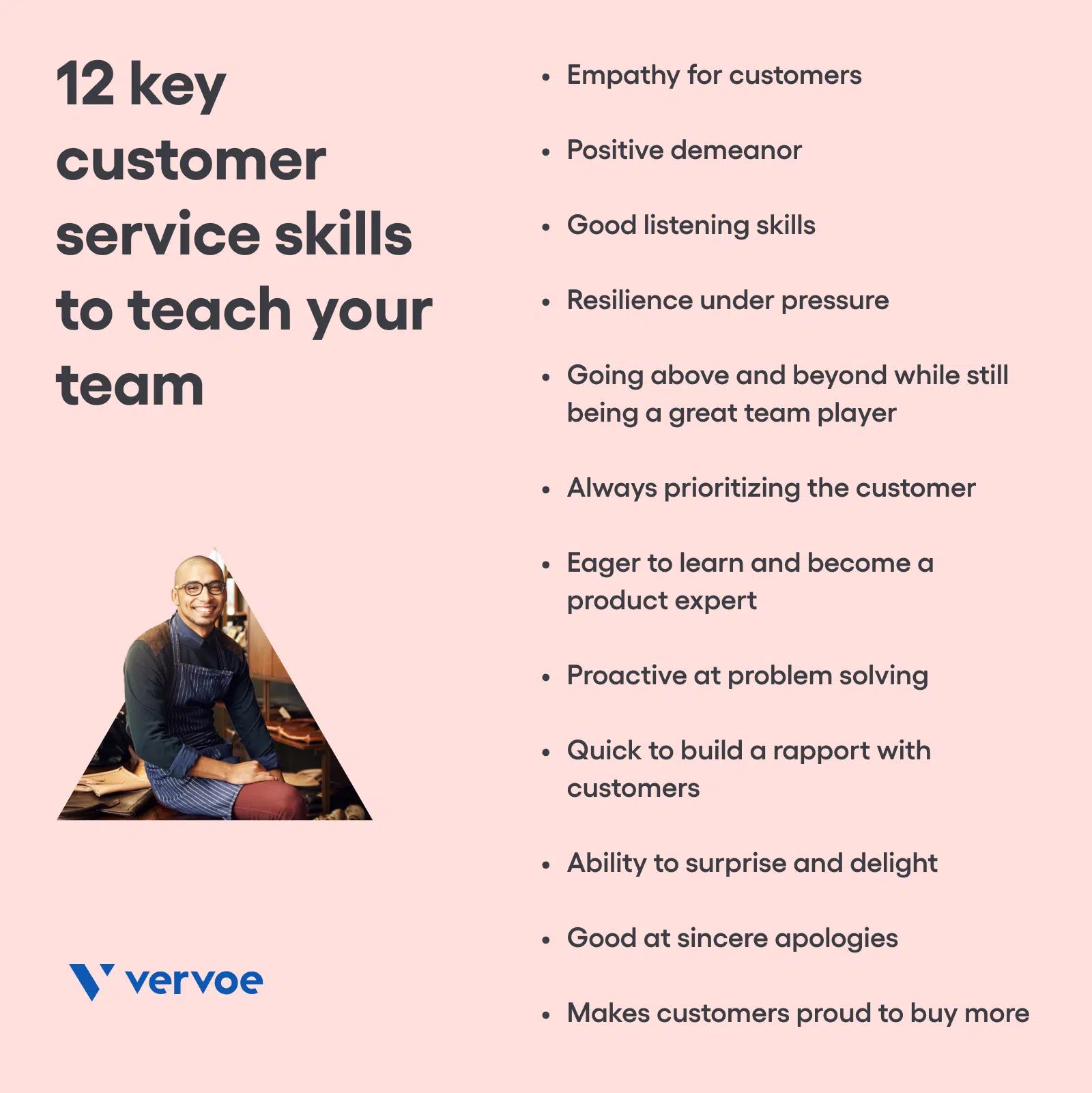Since the pandemic began, the retail industry has experienced an unprecedented shift with businesses adapting to the ever-changing demands of customers. And, according to the US Chamber of Commerce, many of these changes are here to stay.
They include 24/7 personalized support over text message and chatbot, curbside pickup, and empathy in customer service.
The latter isn’t a completely new skill for customer service in retail. In fact, it’s integral to most businesses in that sector.
In this article, we’ll explore the social and emotional skills that a good retail customer service employee should have. We’ll look at examples of how you can assess whether someone possesses these essential customer service skills when hiring new staff or doing a performance review. These tips will help you build a stellar team that’ll deliver on your business’s customer service strategy.
But first, let us detail the positive impacts providing good customer service can have on your business, and find out how bad customer service can limit everything from the power of your brand to the health of your bottom line.
The power of excellent customer service
It’s one thing to get a new customer through the proverbial door, it’s another to make a sale, and have a customer return.
Providing great customer service consistently is the key to building a network of loyal customers, which in turn determines the success of your business. Without regularly returning clientele, there’s no business, which is why investing in your customer service team is a sound business strategy.
Good customer service skills across your customer-facing team can lead to…
Repeat sales
If a customer is happy with the product and the service, there’s a big chance they’ll be back for more. According to research done by Salesforce, 89% of consumers are more likely to make another purchase after a positive customer service experience.
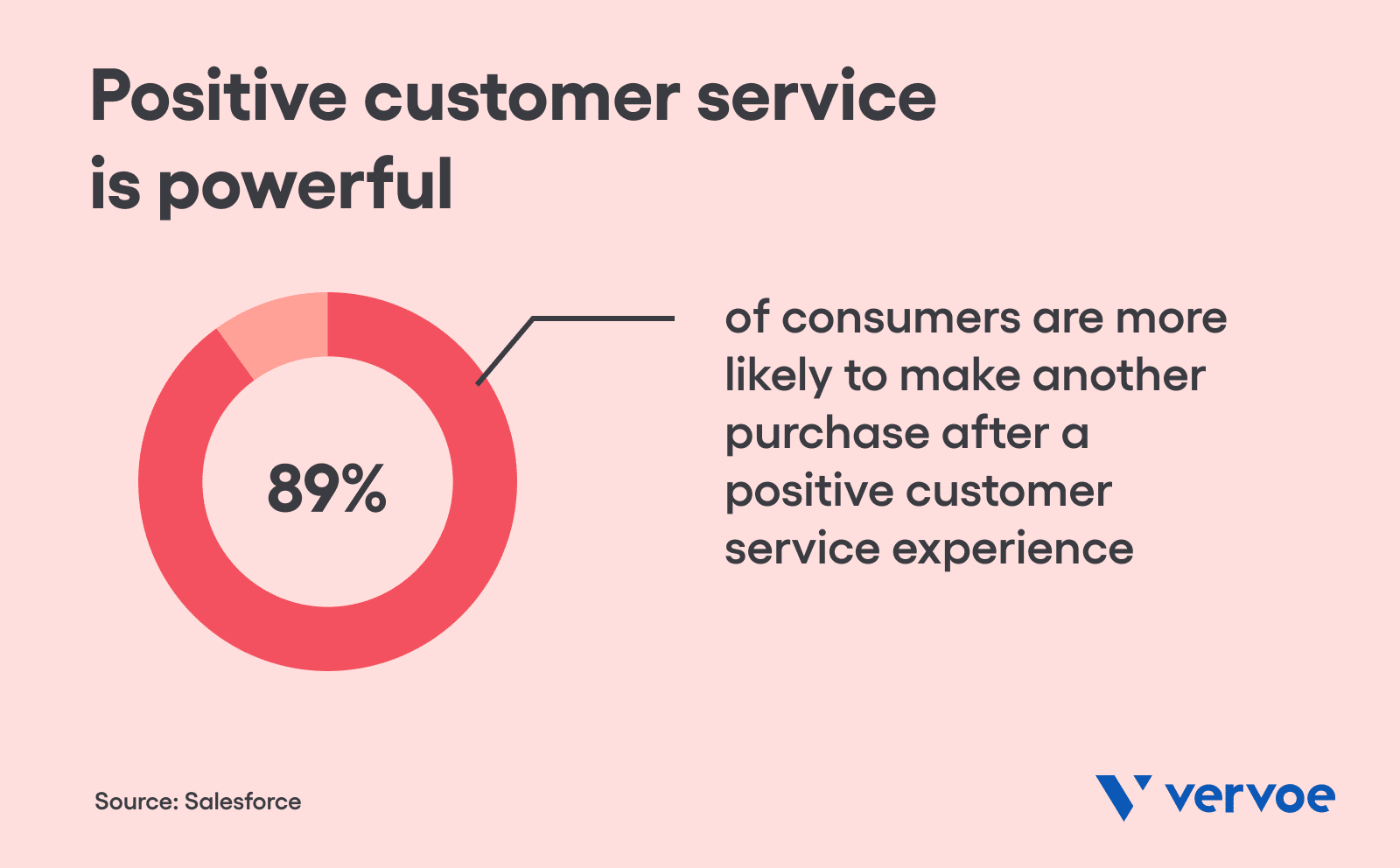
A strong brand
When a customer thinks of your business, they might picture your logo, colors, product style, or user experience, but the most memorable takeaway is often the friendly and genuine way they were greeted and cared for during the shopping experience.
A good reputation
Word-of-mouth advertising is one of the most effective marketing tools for any business. When a customer gets excellent customer service, feels valued, and leaves with a sense they got more than they paid for, it’s likely they’ll recommend or even rave about your business to others.
Charging higher prices
Oftentimes we think that the consumer values a bargain above all, however a positive customer experience can be priceless. When a high-end customer service experience is built into your brand, people will pay a premium to know they’re getting the very best.
A competitive edge
Unless your product has a unique selling point in the market, what separates you from your competitors? In a consumer landscape rife with dissatisfaction, great customer service could be your best offering, setting you apart from other retailers.
High employee morale
The pandemic has placed an inordinate amount of stress on retail employees. Recent data compiled by Ultimate Kronos Group shows that 73% of retail staff no longer want to work in retail. This presents an opportunity to invest in training that emphasizes the fundamentals of good customer service that puts a premium on respect, kindness, and helping others. The more this behavior is encouraged, the more confident and content your team will feel in their jobs, increasing staff retention.
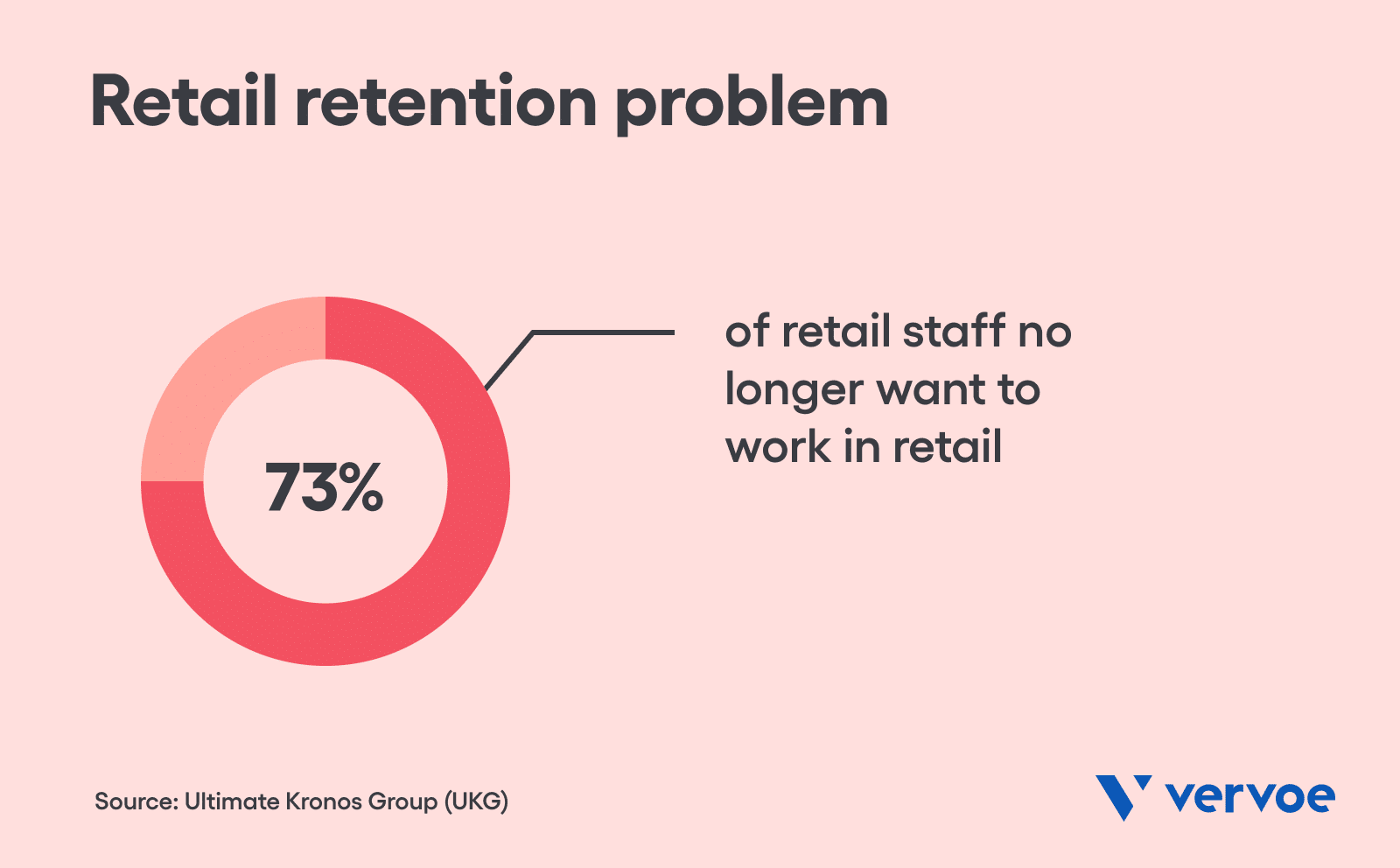
The power of terrible customer service
A study by Microsoft on the global state of customer service found that 58% of American consumers will switch companies because of poor customer service.
Take that 58% and then consider the ripple effect of bad publicity. One bad customer experience doesn’t simply equate to a single lost opportunity. When a frustrated customer airs their bad experience on social media or a public review-based site, it has grave potential to steer new clients away.
This can lead to losses in different parts of a business. You might find yourself increasing spending on other marketing strategies to compensate. With a damaged reputation, the confidence of your existing customers and employees can falter, leading them to look elsewhere for products, services, and employment.
With the right knowledge and training, the following customer service skills list can help you develop an excellent customer service experience.
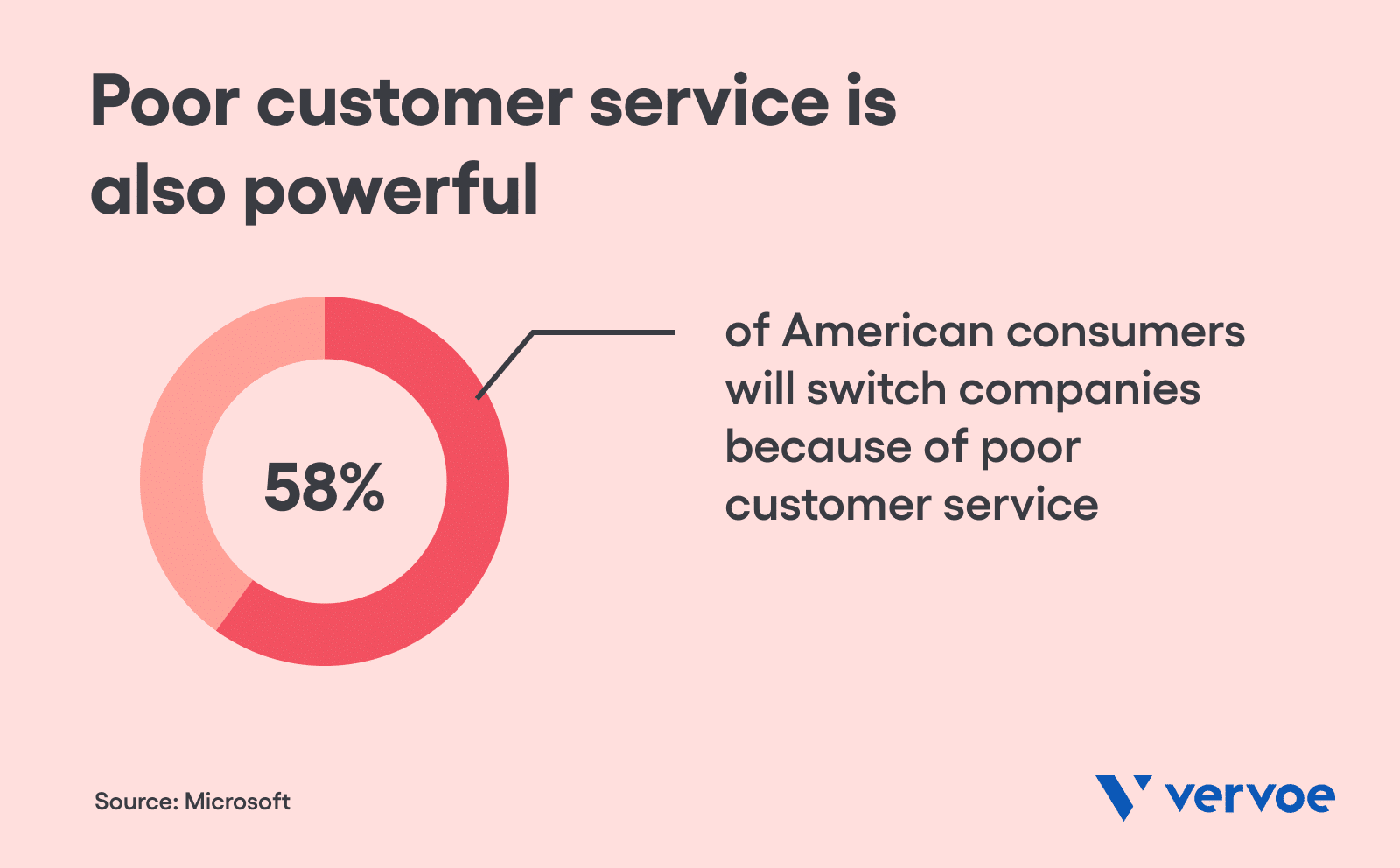
12 key customer service skills in retail to teach your team
1. Empathy for customers
Empathy is the ability to understand and share the feelings of others. The first step of showing empathy is becoming aware of another person’s emotional state, then acknowledging their concerns and stating a desire to help.
Example: A customer service agent is met by a frustrated customer who has waited an hour on the phone. She says, “I’m so sorry for the long wait. I know how frustrating it must be to be kept waiting on the phone. Let’s get your issue sorted as quickly as possible.”.
How to teach your team: The best way you can teach empathy to your team is by modeling this skill as a manager. Take time to regularly empathize with the challenges and needs of your customer service reps, and step into their shoes before offering a solution.
How to assess this skill: Observe whether the person becomes flustered by other people’s emotions or whether they keep calm, and approach the situation in a warm, friendly and helpful manner. Eye contact, a smile, and confident body language are good indicators of this.
2. Positive demeanor
Ever wondered why you feel upbeat around people with a positive demeanor, but can feel down around people who are angry or stressed? Research has found that humans have a tendency to mimic the emotions of those around us. If staff approach customers in a happy and enthusiastic manner, odds are these qualities will rub off and be reciprocated by customers.
Example: A customer is in need of a garment in one size larger than she has tried on in-store. The bigger size is not on the rack so she seeks assistance from a sales staff member who checks stock availability. She tells the customer, “The larger size is arriving at our warehouse in two weeks. I can place an order for you right now and get it sent directly to you or to the store as soon as it comes in?”.
How to teach your team: Workshop ways to problem-solve common customer service issues where you discuss what going the extra mile can look like in various situations. Facilitate a culture that encourages self-awareness and wellbeing practices. Some ideas include regular breaks to process emotions, walks outside, open communication, and team connection.
How to assess this skill: As well as reading body language and temperament, look out for positive language versus glass-half-empty language. The staff member in the example above could easily have said, “The larger size won’t arrive for another two weeks. It’s on back-order and unavailable right now.”. Instead, she focused on what could be achieved.
3. Good listening skills
Listening well to others is not only essential to excellent customer service, it’s a life skill. Listening doesn’t just refer to hearing; it can encompass a range of human interactions with the ultimate goal of understanding another person.
Example: A customer asks about the cost savings of buying a particular item. The customer service representative asks several questions and through the answers they receive, they discover that the customer’s initial question was in fact part of a larger issue. The customer service agent is able to give a refund on a mistake purchase which was an unexpected surprise for the customer.
How to teach your team: When it’s time to train retail customer service employees, take a cue from Australian journalist Kate Murphy, who found the best ways to effectively listen, being open to silence, refraining from offering your own take (people often do this to show they relate), asking questions, and taking a break to avoid mental burnout.
How to assess this skill: Customer service reps who listen show an attempt to understand. Are they taking moments to mentally process the query? Are they asking the right questions? Repeating customers’ questions to clarify their requests is also a good sign.
4. Resilience under pressure
The pressure is on for sales staff, now more than ever. In the same study done by Ultimate Kronos Group, 32% of retail customer service staff reported a grueling work environment due to systemic understaffing during the pandemic.
“The pandemic has placed an extraordinary amount of mental and physical strain on retail employees,” says Nilesh Mehta, the Founder, and CEO of Independence Bridge Consulting, a technology consulting firm focusing on retail organizations.
If you can leverage tools and training to boost resilience, there’s a better chance your staff will thrive, not just survive.
Example: A retail store team member is in the midst of helping find sizes for a customer in the change room when they are approached by two new customers asking for help. The team member notices the customers’ stress levels rising, then takes a moment to consider the options.
They decide to warmly communicate to each customer, including the one awaiting an item in the changeroom, how and when they plan on helping each person. They then go about these tasks calmly, one after the other. After successfully delivering this customer service experience, they ask for a 10-minute break to walk off some stress.
How to teach your team: Coach and mentor your team to incorporate stress-reducing techniques at work and in life in order to maintain their ability to offer good customer service. These include keeping hunger and thirst at bay, regular exercise, rest, and relaxation.
Mentally, you can help your customer experience employees to frame stressors as challenges to overcome. When they feel the pressure building, they should practice pausing, become aware of the issues, and approach them from a can-do perspective. Be sure to talk to them about the benefits of turning being flustered into being excited, mobilizing their good customer service skills into purposeful action.
How to assess this skill: A resilient person sees an opportunity for growth in a challenging situation. They will demonstrate calm when bombarded with multiple customer queries and demands and show open communication with customers, drawing on internal and external resources to manage the issues at hand.
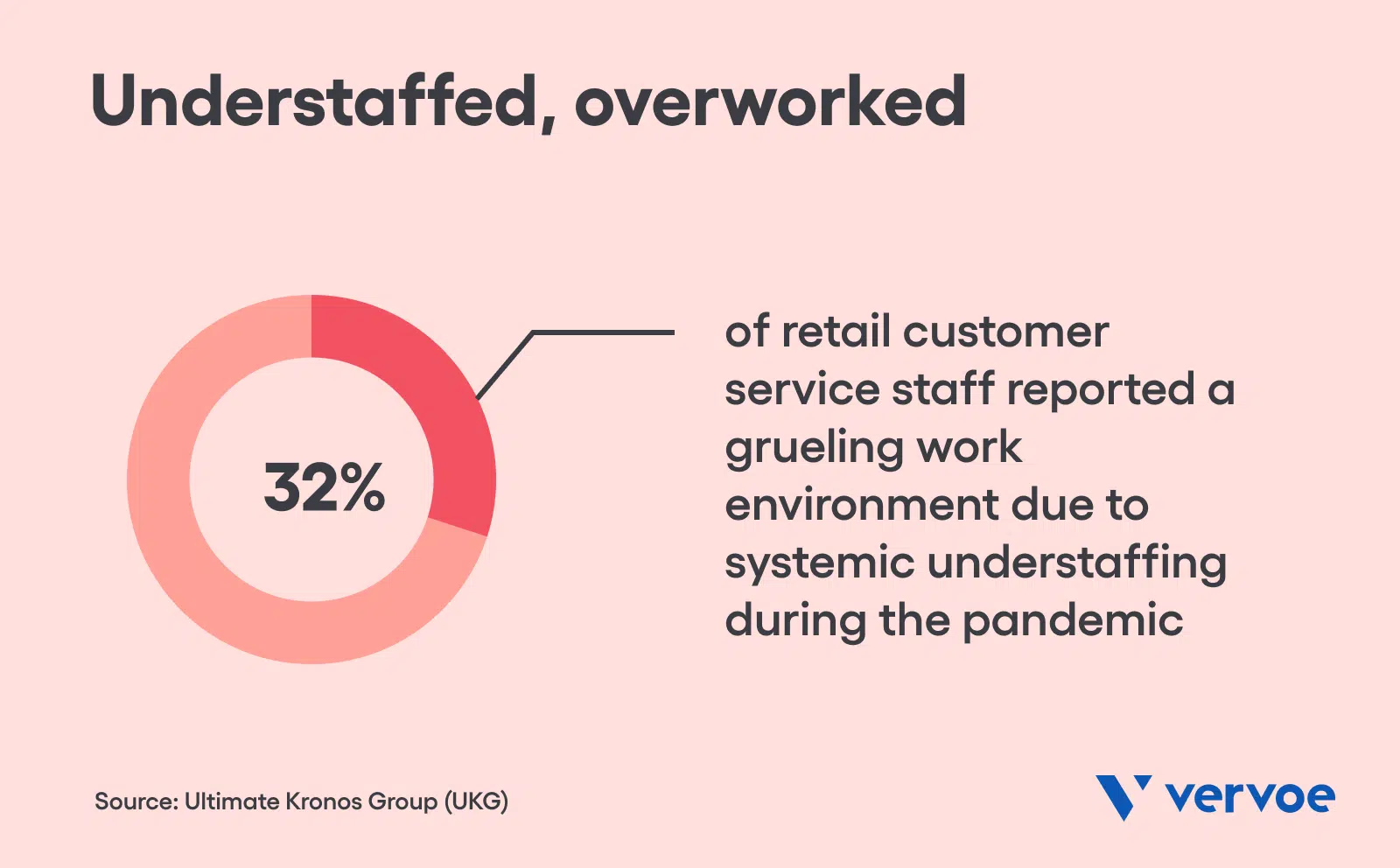
5. Going above and beyond while still being a great team player
Teamwork and camaraderie can easily slip away when the focus is on providing one-on-one customer service in retail. However, when team members are able to work well together, everyone’s jobs become more seamless, while simultaneously creating a smoother customer experience.
Example: A front-of-house staff member is approached for help and in a timely manner leads the customer directly to the appropriate floor staff. She kindly greets and introduces the customer to the team member using both of their names, and explains the customer’s requirements with a little personalized chit-chat.
How to teach your team: Train employees to promote positive team interactions by getting together as a group and sharing ideas and suggestions on how to work well as a team. Make staff accountable for disrespectful behavior at performance review time.
How to assess this skill: You can assess good teamwork that leads to great service by the connections and interactions between staff members. If employees are engaging and friendly with one another, it’s a sure bet they’ll be willing to work well together on the floor to greet customers, answer customer questions, take customer orders, and provide a positive experience.
Identifying and scheduling retail staff that work well together can further enable teamwork. This type of strategic approach in employee scheduling can keep team members happy with more consistent and effective outcomes.
6. Always prioritizing the customer
We’ve all heard the expression “the customer comes first”. Using this well-trodden method, every retail business decision considers the end result for the customer from return policies on a customer’s order to shipping costs for online shoppers.
Example: A much-anticipated activewear line sells out in-store and in the online store, fast. But when customers call in one by one to complain about stitching unraveling and seams opening up, your team takes customer feedback seriously, issuing a full refund and providing timely responses to online reviews and queries.
How to teach your team: Train your team to respond quickly to inquiries, on a first-come, first-serve basis (while acknowledging those who have to wait), and build in generous refund policies that make customers happy above all. Place frequent customers, repeat customers, and new customers at the same level of importance.
How to assess this skill: Keep an eye on the time it takes for your employees or job candidates to demonstrate these customer service skills and reach and respond to customers. Consider whether the solution given to a customer issue demonstrates good customer service, or whether profits are being prioritized over customer expectations.
7. Eager to learn and become a product expert
Having extensive product knowledge allows employees to educate customers, enabling them to cross-sell and upsell products.
Example: A shopper is looking for a gift that’s both functional and beautiful. The sales assistant shows the shopper a handmade mug, giving a brief background on the artist, as well as an easy-to-understand list of the features and benefits of the piece. They say, “It’s been handmade on a potter’s wheel and finished with a glaze, making it easy to use and clean every day in the dishwasher”.
How to teach your team: Hold product training days where staff can touch, explore and play with new products. Show them real-life examples of how the products can be used and invite them to use their creativity to show the rest of the team their examples of good customer service.
How to assess this skill: Hiring staff who have a genuine passion for your products and a desire to delight customers is a good start as they will naturally show an interest in getting to know stock. Watch their faces light up as new products arrive, their inquiry into the products, and examples of good customer service they offer in the way they use the features and benefits to sell the products to customers.
8. Proactive at problem-solving
Example: A man walks into a retail store seeking a spare part for a clock. The salesperson knows she doesn’t have it in-store but calls around to source it from other stores. When it’s clear the company is completely out of stock, she calls the brand directly and organizes the spare part to be sent directly to the customer’s address.
How to teach your team: Instead of seeing a shopper merely as a potential new sale, encourage your staff to find out what problem they’re looking to solve. Talk about ways you can create a good customer service experience for all customers, not just the ones spending large sums of money at your store.
How to assess this skill: How long does it take for an interaction to end with a customer? Is the sales associate taking time to inquire, ask questions and get to the source of the customer’s desires? Similarly, if one solution isn’t accepted, your staff member should be finding various new ways to solve the problem for the customer.
9. Quick to build a rapport with customers
Sales staff who remember customers’ names and orders, or who find commonalities with customers in the midst of their tasks do better at making the shopping experience memorable and meaningful and attracting repeat customers.
Example: While completing a transaction at the checkout, a customer service worker notices the customer is wearing a t-shirt with a Seinfeld quote on it and says to them, “I love your t-shirt, that episode was one of my favorites”. The two people enjoy a friendly chat together before saying goodbye.
How to teach your team: Teach your team to be observant at all stages of the buying journey. Encourage them to be observant of customer profiles and look for commonalities between different customers. Even if small, good customer service workers can find connections on a personal level that will strike up a conversation, demonstrate your product knowledge, and ultimately delight customers with your level of service.
How to assess this skill: What are the kinds of conversations your customer service staff has with clients? Are they personal or merely transactional? When workers call regulars by their first names and jump at the opportunity to show them they remember them, it’s a great example of good customer service skills in action.
10. Ability to surprise and delight
Incorporating small gestures that clients don’t expect adds an element of surprise and delight that acts as the icing on the cake.
Example: A customer receives a much-awaited purchase from an online store in the mail. She unwraps it and finds a hand-written card from an employee at the online retailer that reads, “Dear Larissa, you’ve made a wonderful choice. I hope you enjoy using this beautiful cream as much as I do. I really appreciate your business. Any questions or feedback, please get in touch. Connie x (Phone number included).”.
How to teach your team: Examples of good customer service often come from a personalized approach derived from your team’s individual personalities. Encourage staff to surprise and delight by being themselves at work and putting their own personal touches on things.
How to assess this skill: As a retail manager, ask yourself, are you being surprised and delighted by your employees’ personal touches on the job? Is their personal humility shining through enough to create repeat customers? Do they have an innate ability to show kindness and make other people feel happy?
11. Good at sincere apologies
Even in a customer-centric world, mistakes will be made. A verbal acknowledgment and sincere apology can save human error from becoming a permanent criticism that is broadcast to the world.
Example: A customer types to a live chat agent for an online retailer in fury over receiving the wrong item, twice. The customer service representative calms the customer down by telling her he is organizing the correct item to be sent right away and follows with, “I am deeply sorry that you have had to go through this experience. It is not what we wish for any of our customers. Thank you for bringing this to my attention and allowing me to address it.”.
How to teach your team: Draw on good customer service skills like empathy and encourage your team to put themselves in their customer’s place. If they had been inconvenienced twice how would they feel? Explain that when resolving an issue, a sincere apology is the best way to show care, which leads to a more harmonious closure of the case.
How to assess this skill: Take note of how your employees express themselves. Do they just say “sorry” like a naughty child and move on, or do they take the time to tailor a considered response that shows genuine regret for the customer’s bad experience? The use of emotive words such as ‘deeply’ and ‘sincerely’ talk to the authenticity of the apology.
12. Makes customers proud to buy more
Pride in a brand is the highest expression of customer loyalty. Part of building brand loyalty is having staff who genuinely believe in the brand, and who live and breathe its values. When a team member is able to approach a sale with genuine enthusiasm for the product, the odds are the customer will believe in it too.
Example: A shopper is greeted by a team member who is dressed impeccably, head-to-toe in the store’s stock. He looks like he could be part of the brand’s ad campaign. While the shopper has come in to buy a pair of work pants, they are inspired by the look of the sales assistant and allow him to suggest outfit options. The shopper leaves with a full bag and is excited to go to work the next day, proud to show off their new look.
How to teach your team: Hold training sessions to explore the latest products and their benefits, and provide examples of good customer selling experiences they can provide with these items. Give employees incentives to want to own, wear and use more products so that they are living brand advocates in and out of the workplace. Talk about how to verbally describe the features and benefits of the product. Make them want to increase their product knowledge.
How to assess this skill: Consider the ways your employee talks about your products to the customer. Do they merely show the customer an item or do they present various options, demonstrating the ins and outs, how they work, why they’re great, and how they’re the top option for serving a particular business type?
Conclusion
A strong customer service offering is a cost-effective method to boost your business’s brand and reputation in the market and lies in the emotional and social capabilities of your customer service team members.
With the right tools, you can train your staff to have great customer service skills and assess the capabilities of future customer service agents, before you hire them.
See how candidates perform in life-like customer support scenarios with our new Customer Service Simulator – try it today.


